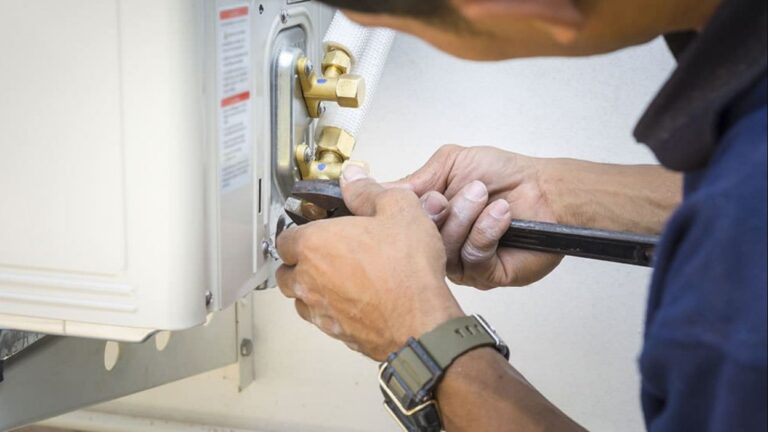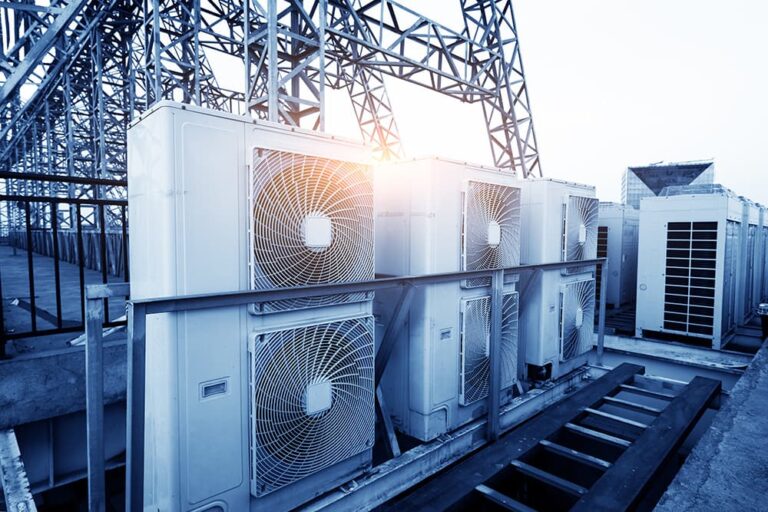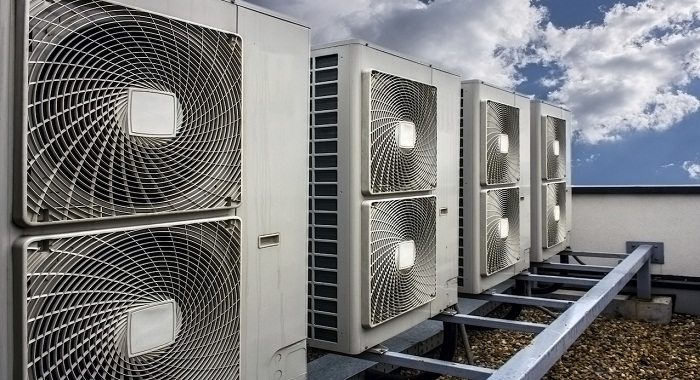AC Tune-Up Checklist: What Technicians Look For
Understanding what happens during a professional HVAC service can help homeowners appreciate the value of regular maintenance and know what to expect when technicians arrive.
A comprehensive tune-up involves a thorough inspection of both indoor and outdoor components to ensure optimal system performance and efficiency. Regular maintenance can significantly reduce cooling bills and prolong the lifespan of your HVAC system.
By knowing what’s included in a professional air conditioning service, homeowners can distinguish between thorough maintenance and superficial check-ups. This article breaks down the complete checklist, explaining each component that technicians inspect to ensure the overall health and efficiency of your cooling system.
Key Takeaways
- Regular HVAC maintenance can reduce cooling bills and prolong system lifespan.
- A comprehensive tune-up involves inspecting both indoor and outdoor components.
- Professional technicians follow a detailed checklist to identify potential issues.
- Understanding the service helps homeowners appreciate its value.
- Thorough maintenance can decrease the likelihood of unexpected breakdowns.
Why Regular AC Tune-Ups Are Essential
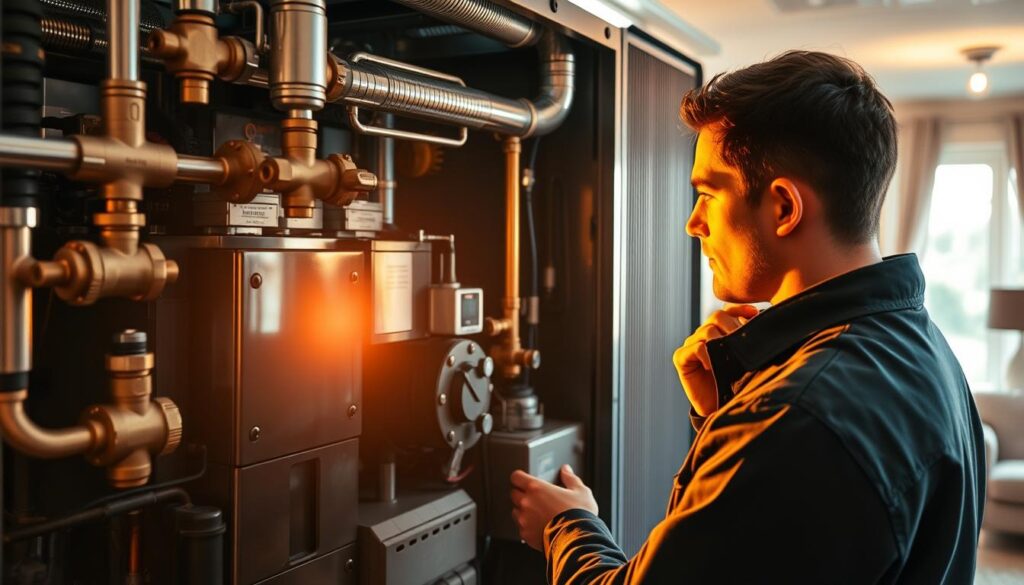
Maintaining your air conditioning system through regular tune-ups is crucial for its efficiency and longevity. Regular AC maintenance not only ensures your system operates effectively but also provides numerous benefits that impact your comfort, wallet, and the environment.
Benefits of Preventative Maintenance
Preventative maintenance is key to extending the life of your HVAC systems and reducing energy costs over time. By identifying and addressing minor issues before they escalate, homeowners can avoid costly repairs and maintain a comfortable indoor climate.
Extended System Lifespan
Regular tune-ups help in prolonging the lifespan of your AC unit. By ensuring all components are clean and functioning properly, you can significantly reduce wear and tear on the system.
Reduced Energy Costs
Well-maintained HVAC systems operate more efficiently, consuming less energy and resulting in lower monthly utility bills. Studies have shown that regular maintenance can reduce energy consumption by up to 15%.
Prevention of Major Breakdowns
Preventative maintenance helps in identifying potential issues before they become major problems, saving homeowners from expensive emergency repairs during peak usage seasons.
The Cost of Neglecting Maintenance
Neglecting regular maintenance can lead to decreased efficiency, increased energy bills, and potentially costly repairs. Understanding the implications of neglecting your AC maintenance is crucial for making informed decisions about your HVAC system.
Decreased Efficiency and Performance
Failure to maintain your AC system can result in decreased performance, with dust and dirt accumulation causing the system to work harder and consume more energy.
Expensive Emergency Repairs
The cost of emergency repairs, especially during extreme weather conditions when service calls are at a premium, can be significantly higher than the cost of preventative maintenance.
| Maintenance Aspect | Benefits | Consequences of Neglect |
|---|---|---|
| Regular Tune-Ups | Extended system lifespan, reduced energy costs | Increased energy bills, potential for major breakdowns |
| System Efficiency | Peak performance, lower utility bills | Decreased efficiency, higher costs |
“Regular maintenance is crucial for the longevity and efficiency of HVAC systems. It’s an investment in comfort and cost savings.”
By understanding the importance of regular AC tune-ups and the potential consequences of neglecting maintenance, homeowners can make informed decisions to protect their investment and ensure a comfortable living environment.
The Complete AC Tune-Up Checklist: Outdoor Unit Inspection
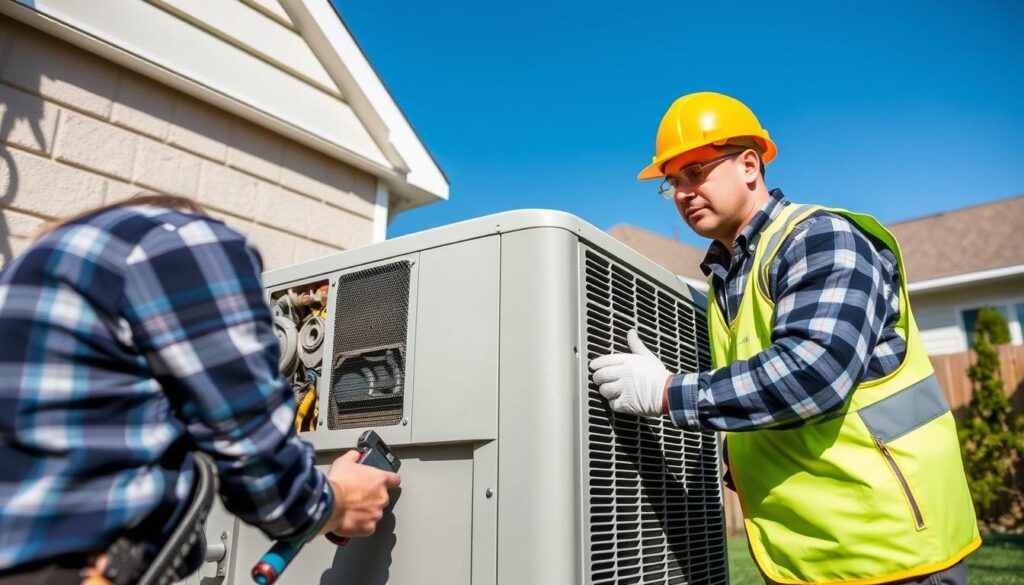
A thorough outdoor unit inspection is crucial for maintaining your air conditioning system’s performance and longevity. The outdoor condenser unit is the heart of your air conditioning system, requiring thorough inspection during every tune-up to ensure optimal performance.
Condenser Coil Examination
Technicians begin by examining the condenser coils for dirt, debris, and damage, as clean coils are essential for efficient heat transfer and system operation. Our technicians will inspect the coils to ensure there is no excess dirt around or on the coils.
Refrigerant Line Inspection
Refrigerant line inspection includes checking for physical damage, proper insulation, and signs of leaks. Our technicians inspect the refrigerant lines for signs of physical damage, as even minor refrigerant leaks can significantly reduce cooling capacity and increase energy consumption.
Fan Blade and Motor Assessment
Fan blade and motor assessment involves checking for proper balance, lubrication, and operation. On rare occasions, due to sudden stoppage of the condensing fan motor, the blades sitting on top can get out of balance, causing the unit to shake more than normal and resulting in cracked components.
Electrical Component Testing
Electrical component testing is crucial for system reliability, with technicians checking capacitors, contactors, and relays for signs of wear or failure that could cause system shutdown.
Capacitors and Contactors
Capacitors and contactors are critical components that require thorough inspection. Technicians check for signs of wear, such as overheating or corrosion, which can lead to system failure.
Disconnect Box and Wiring
The disconnect box and wiring are inspected for safety issues, loose connections, and signs of overheating that could pose fire hazards. Ensuring the electrical connections are secure and not damaged is vital for system safety and efficiency.
Unit Platform and Surrounding Area
Technicians evaluate the unit platform to ensure the condenser is level and stable, as an unstable foundation can cause excessive vibration and premature component failure. The surrounding area is checked for proper clearance and airflow, removing any vegetation or debris that might restrict air circulation around the unit.
By following this comprehensive tune-up checklist for the outdoor unit, technicians can identify potential issues before they become major problems, ensuring your air conditioning system operates efficiently and effectively throughout its lifespan.
Indoor Unit Inspection Components
Inspecting the indoor unit is a critical component of AC maintenance, directly impacting your home’s air quality and system efficiency. A comprehensive inspection ensures that all components are functioning correctly, providing optimal cooling and air quality.
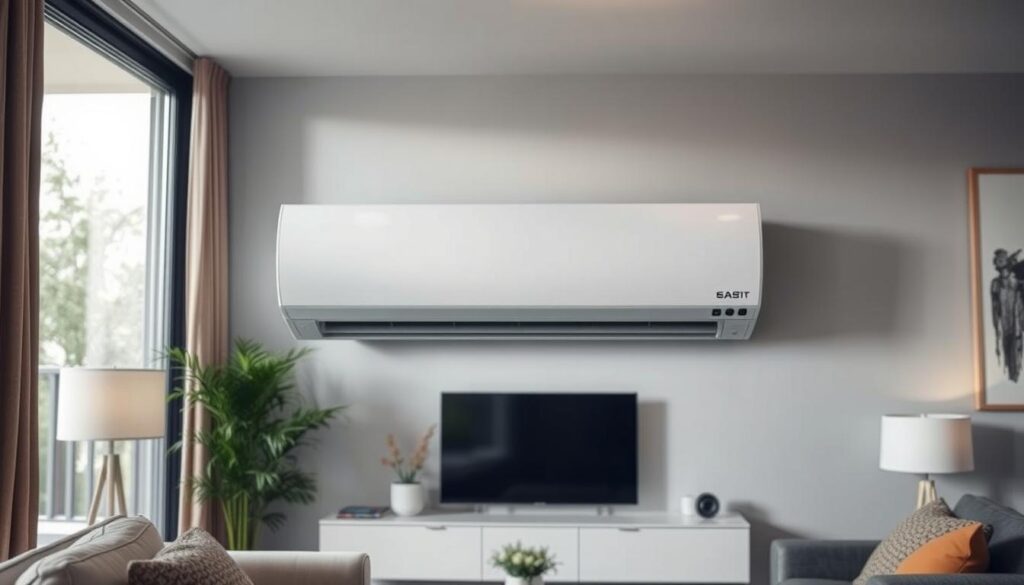
Evaporator Coil Cleaning and Inspection
The evaporator coil is a crucial component of your AC system, responsible for cooling the air. Over time, it can accumulate dirt and debris, reducing its efficiency. Our technicians clean and inspect the coil to ensure it’s free from contaminants and functioning properly. This process involves checking for signs of mold, corrosion, or damage that could impact performance.
Blower Motor and Assembly Evaluation
The blower motor is essential for circulating conditioned air throughout your home. During the inspection, technicians evaluate the blower motor and assembly for proper operation, lubrication, and electrical connections. A dirty or malfunctioning blower motor can lead to reduced system performance and increased energy bills.
Air Filter Replacement and Filtration System Check
Air filter replacement is a critical maintenance task. Clogged filters can restrict airflow, reduce efficiency, and cause system failures. Technicians check the condition of the filters and recommend appropriate replacement schedules to maintain optimal air quality and system efficiency. For more information on AC tune-up procedures, you can visit our AC Tune-Up Checklist page.
Condensate Drain Line Maintenance
The condensate drain line is responsible for removing moisture from the air. If clogged, it can cause water damage to your home. Technicians clean the condensate drain line to prevent algae and mold growth, ensuring proper drainage and preventing potential issues.
Safety Controls and Switches Testing
Safety controls and switches are vital for preventing damage to the system and ensuring safe operation. Technicians test these components, including the overflow safety switch, to verify they are functioning correctly. This switch shuts down the system if it detects issues with the condensation line, preventing potential water damage and maintaining safety.
System Performance and Operation Checks
System performance and operation checks are crucial for maintaining your air conditioner’s efficiency and longevity. These checks involve a series of measurements and tests to ensure your system is operating as intended.
Refrigerant Level Measurement
Refrigerant level measurement is a critical aspect of system performance checks. Technicians use ultra-precise digital gauges to measure the exact refrigerant levels in your system. This is important because both undercharging and overcharging can lead to reduced efficiency and potential system damage. Incorrect refrigerant levels can reduce efficiency by up to 30% and cause compressor damage. For more details on the importance of refrigerant levels, you can refer to our comprehensive HVAC performance tune-up checklist.
Temperature Differential Testing
Temperature differential testing measures the difference between the return air and supply air temperatures. A healthy system typically shows a 15-20 degree difference. This test helps technicians identify potential issues that might not be visible during component inspections. A smaller differential could indicate problems such as low refrigerant levels or issues with airflow.
Thermostat Calibration and Programming
Thermostat calibration ensures that your system responds accurately to temperature settings. Proper calibration prevents short cycling and maintains consistent comfort throughout your home. Technicians check the thermostat’s accuracy and programming to ensure it’s working correctly with your air conditioning system.
Amperage and Voltage Readings
Amperage and voltage readings help technicians evaluate the electrical health of your system. Readings outside manufacturer specifications can indicate failing components or electrical problems. This check is crucial for preventing unexpected system failures and ensuring the longevity of your air conditioner.
| Check | Description | Importance |
|---|---|---|
| Refrigerant Level Measurement | Measures exact refrigerant levels | Prevents efficiency reduction and compressor damage |
| Temperature Differential Testing | Measures return and supply air temperature difference | Identifies potential issues not visible during inspections |
| Thermostat Calibration | Ensures accurate temperature control | Prevents short cycling and maintains comfort |
| Amperage and Voltage Readings | Evaluates electrical health | Indicates failing components or electrical issues |
When to Schedule Your AC Tune-Up for Maximum Benefit
A well-timed AC tune-up can make all the difference in the performance and longevity of your HVAC system. To maximize the benefits of maintenance, it’s recommended to schedule your AC tune-up in the spring, before the summer rush. This allows technicians to identify and address any issues before they become major problems. By doing so, you can ensure your system is ready to keep you cool and comfortable when you need it most.
For optimal results, consider scheduling HVAC tune-up twice a year, once in the spring and once in the fall. This bi-annual maintenance schedule can help prevent premature wear and tear on your system. For more information on preparing your HVAC system for the summer, visit https://hvacnearme.today/prepping-hvac-system-for-summer/. Regular tune-ups can also help maintain manufacturer warranties and prevent costly repairs.


